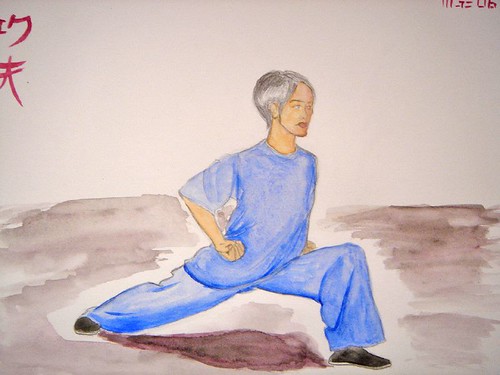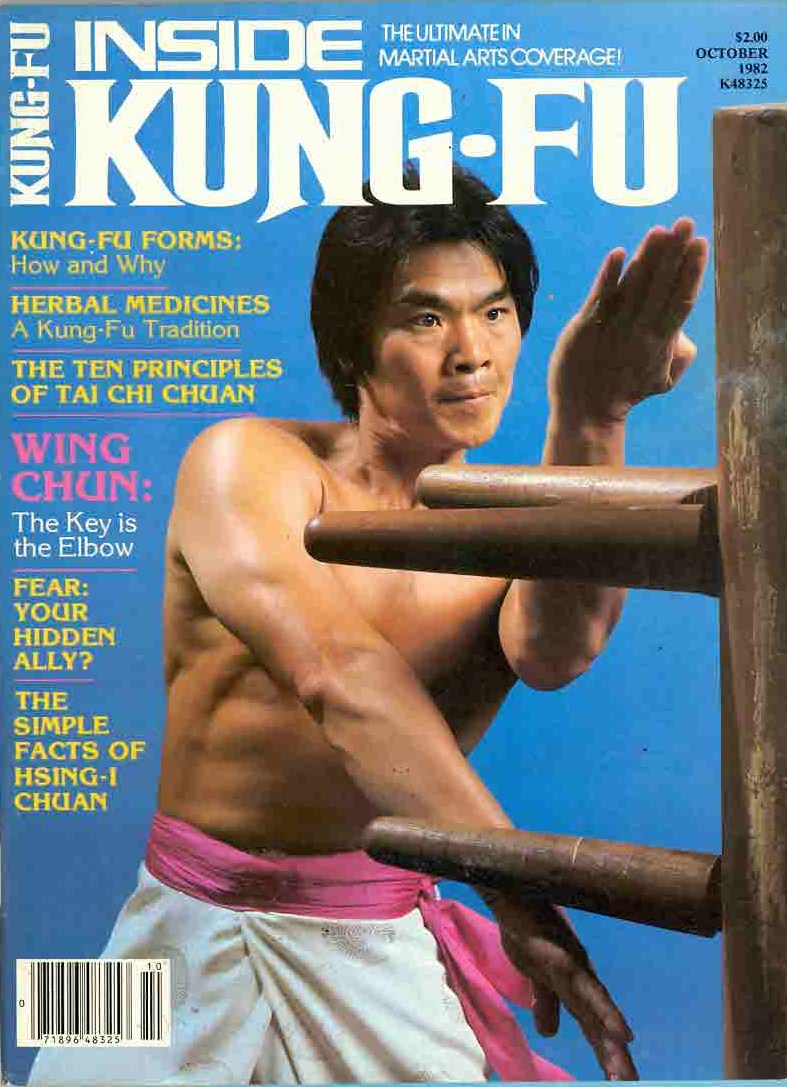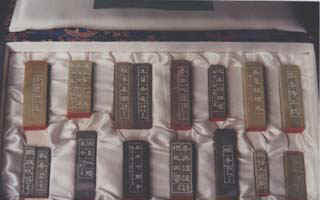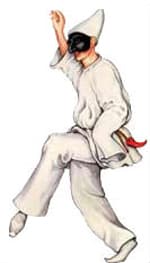Ringrazio l'amico Krypteia per la traduzione!
Oggi siamo con William Cheung, fondatore della World Wing Chun Kung Fu Association (www.cheungswingchun.com).
***
Oggi siamo con William Cheung, fondatore della World Wing Chun Kung Fu Association (www.cheungswingchun.com).
Quando hai cominciato a praticare arti marziali?
Da sempre, sin da quando ero bambino, io e mio fratello subivamo le angherie del nostro fratellastro George, detto King Kong, di cinque anni più grande di me. Ho sempre voluto imparare il kung fu per difendermi dai bulli come King Kong.
A dieci anni mi iscrissi a un club di nuoto e feci amicizia con Wong Man Leung. Questi mi disse che suo fratello, Wong Shun Leung, era un bravo pugile e aveva vinto diversi incontri con alcuni famosi maestri di kung fu. Un giorno Man Leung mi invitò a vedere la sfida tra Shun Leung e un anziano maestro che praticava uno stile inventato da una donna. Ero molto curioso di vedere come Man Leung avrebbe sconfitto questo vecchio maestro, e magari pensai che avrebbe potuto insegnarmi qualche colpo.
Quando arrivammo all’“Unione ristoratori cinesi di Hong Kong” a Tsim Shar Tsui vedemmo un ometto di mezz’età venirci incontro invitandoci a entrare. Senza perdere tempo, Shun Leung sfidò a voce alta quest’ometto e iniziò a girargli intorno con dei passi simili a un balletto. Ricordo che rimasi impressionato dalla sua agilità, ma a un tratto Shun Leung cadde a terra ai piedi dell’uomo. Si rialzò subito, si tolse di dosso la polvere e si rimise a saltellare; tirò un jab sinistro all’avversario e si ritrovò a terra. Alla terza volta pensammo che era il caso di andarsene subito. Una volta sulla strada ci guardammo in faccia l’un l’altro senza dire una parola.
Pochi mesi seppi da Man Leung che il fratello aveva iniziato a studiare con quell’uomo di mezza età il Wing Chun Kung Fu, uno stile inventato da una donna, così decisi che volevo impararlo anche io.
Come sei venuto a conoscenza del Wing Chun?
Sono diventato allievo del Granmaestro Yip Man alla fine dell’estate del 1951. Ma a quei tempi erano gli allievi anziani che insegnavano ai nuovi, almeno per i primi 5 o 6 mesi. Nei primi 6 mesi il mio insegnante fu Tui Shang Tin. Poi Wong Shun Leung mi fu sempre di grande aiuto, mi dava sempre dei preziosi consigli.
Quali sono le differenze tra il tuo Wing Chun e le altre interpretazioni (Wing Tsun, Wing Tjun, etc.)?
Il Wing Chun è uno stile di arti marziali unico, il solo creato da una donna, la monaca Ng Mui. Tuttavia a un granmaestro era permesso di scegliere una sola persona a cui trasmettere l’arte. Leung Jun (il granmaestro di Yip Man) aveva avuto però due allievi: Chan Wah Shun e il proprio figlio Leung Bik. Ma Leung Jun insegnò a Chan Wah Shun solo il Wing Chun modificato, privo di footwork e con tecniche meno efficaci. Yip Man ebbe due sifu: il primo fu Chan Wah Shun (che gli trasmise il Wing Chun modificato) e l’altro fu Leung Bik (che gli insegnò il Wing Chun tradizionale). Quando Yip Man venne a Hong Kong, insegnò il Wing Chun modificato a tutti i suoi allievi e scelse me per trasmettere il Wing Chun tradizionale.
Hai fondato la tua organizzazione. Come sono i rapporti con le altre famiglie del Wing Chun?
Nel 1975 tornai a Hong Kong in vacanza per un paio di mesi. Mostrai a tutti i miei fratelli di Wing Chun dell’epoca che esisteva un Wing Chun tradizionale. Feci Chi Sao e uno sparring leggero con tutti loro e li sconfissi con facilità. Dissi loro che avevo intenzione di insegnare il Wing Chun tradizionale, ma nessuno di loro si dimostrò interessato. Non vollero aprire gli occhi. Le foto allegate dimostrano che feci Chi Sao e sparring leggero con Wong Shun Leung. Guardate anche “Yong Chun” con Yeun Bil nella parte di Leung Jun e Hung Kam Bo (SUM MO) che interpreta Wong Wah Bo. Vi darà l’idea del Wing Chun di 120 anni fa.
Puoi raccontarci la storia del rapporto tra il GGM Yip Man e il Dai Duk Lan?
Ho vissuto con Yip Man per quattro anni, dalla fine del 1954 alla fine del 1958. Dopo avermi messo duramente alla prova per mesi, Yip Man scelse me come erede del sistema di Wing Chun tradizionale. Non so chi sia questo Dai Duk Lan – forse lo conosco con il nome scritto in maniera diversa.
Di tutti i miei fratelli di Wing Chun dell’epoca credo che sia rimasto in vita solo Tui Sheun Tin. Io compirò 70 anni quest’anno, lui dovrebbe averne circa 80.
Credi che questo rapporto abbia migliorato le capacità del GGM Yip Man con il Luk Dim Boon Kwun?
Yip Man era abilissimo nell’uso del Luk Dim Boon Kwun. Me lo insegnò nel 1957 e mi allenai molto. Poche settimane prima che lasciassi Hong Kong, la vigilia di Natale, Yip Man mi regalò il suo Kwun, lungo circa 3 metri, che era appartenuto al suo maestro Chan Wah Shun. Quel bastone ora è conservato nel mio Kwoon.
GM Lun Kai ci ha detto che il GGM Yip Man non insegnava i Bart Cham Dao a Fatshan. GGM Yip Man studio più tardi questa forma, o la conosceva ma non la insegnò ai suoi primi allievi?
Non so chi sia Lun Kai ma di certo lui mi conosce se ha praticato Wing Chun. Potrebbe aver ragione, perché Yip Man conobbe Leung Bik a Hong Kong quando Yip Man era uno studente al college di De La Salle. Forse l’ha imparata da Leung Bik.
Chi sono stati i tuoi maestri?
Mi trovavo a Canberra, lavoravo come ispettore per la dogana. Mio fratello, King Kong, mi chiamò solo un giorno prima del funerale di Yip Man e così non feci in tempo a partire. Ma mio fratello assistette alla cerimonia. In seguito mi disse che al funerale tutti gli allievi di Yip Man costrinsero Leung Ting a indossare la fascia al braccio e non alla vita, perché quest’ultima era una prerogative degli allievi diretti di Yip Man. Leung Ting era un allievo di Zheng Buk, ossia a due generazioni di distanza da GGM Yip Man.
L’Università dello Sport di Foshan ti ha nominato Granmaestro il 10 ottobre del 2009. Di che università si tratta? E come si diventa Granmaestro?
Sono stato nominato professore ospite dell’Università Cinese dello Sport di Foshan per utilizzare i metodi di allenamento del Wing Chun per migliorare le prestazioni degli atleti olimpici.
Quante ore ti alleni?
A ottobre compirò settant’anni. Sono ancora molto attivo, ma mi alleno solo un’ora al mattino. Insegno però ancora a Melbourne e tengo seminari in tutto il mondo.
Il palmo di ferro è utile alla pratica del Wing Chun?
Assolutamente sì. Ma non credo che esistano altri maestri di Wing Chun che conoscano l’esatta formula segreta per l’unguento necessario alla pratica del palmo di ferro, che permette di eliminare le ecchimosi in 10 minuti. Dopo ogni sessione di allenamento il praticante subirà delle contusioni alle mani dopo aver colpito per dieci minuti il sacco di ghiaia, e deve curarle prima di procedere alla sessione successiva. Si tratta di tre sessione per ciascun allenamento, per una durata di 100 giorni.
Hai mai combattuto in un contest sportive? Quando, dove e con quali risultati?
Ho affrontato diverse sfide con altri maestri a Hong Kong, ai tempi anche Wong Shun Leung e Bruce Lee erano molto attivi in questo senso. Anche quando sono arrivato in Australia, nel 1959, ho sostenuto diverse sfide con campioni e maestri, ma nessuno di questi era un incontro ufficiale. Nei primi anni ’60 non c’era il Karate in Australia, ma solo Judo e Jujitsu. Non permettevano a esterni di partecipare ai loro tornei.
Quante ore a settimana dovrebbe allenarsi un allievo per progredire seriamente?
Anche i professionisti non dovrebbero allenarsi per più di sei ore al giorno. Gli allievi normali dovrebbero allenarsi almeno sei ore a settimana.
Quali sono i concetti di combattimento su cui ci si concentra di più nella tua scuola?
Abbiamo studenti amatori e studenti professionisti, e diversi campioni in tutto il mondo, come Prince Badi Ajamu di Philadelphia, che nel 2009 ha vinto il titolo dei pesi massimi leggeri WBC, titolo che ancora mantiene. È famoso per il suo palmo di ferro.
Abbiamo anche molti altri campioni in Cina, USA, Nuova Zelanda, Ucraina, Serbia e Grecia.
La strategia di combattimento del Wing Chun tradizionale è: “Controlla il gomito e combatti sul lato cieco”.
Io insegno ai combattenti a controllare un solo punto, il gomito avanzato, e poi combattere sul lato cieco e VINCERE.
Puoi raccontarci del tuo combattimento con Emin Boztepe?
Sono passati più di 24 anni, non credo che ci sia nulla di nuovo da dire.
Non so se avete visto il video originale dall’incidente, in tal caso sapreste che non si è trattato affatto di un combattimento. I fatti sono stati distorti da Leung Ting e dai suoi seguaci. Prima che Emin quel giorno si presentasse con venti dei suoi, io ero già stato messo in guardia dai praticanti serbi di Wing Chun people. Mi dissero che gli allievi di Leung Ting mi avrebbero teso un’imboscata al mio arrivo a Koln. L’unica cosa che mi preoccupava era che non avevo un visto di lavoro in Germania, perché mi trovavo già a Klon. Sapevo che il governo tedesco era molto severo con chiunque lavorasse in Germania senza il visto appropriato. Era normale che il governo mettesse qualcuno in cella per mesi prima del processo. Sapendo questo, avevo deciso di fare meno rumore possibile, e quindi non ferire seriamente nessuno.
Tuttavia, prima del seminario, uno sgherro di Leung Ting, fingendosi un giornalista, mi convinse a togliere le scarpe da ginnastica e a indossare un paio di scarpette da Kung Fu per un servizio fotografico. Quando il seminario cominciò ed Emin venne a sfidarmi, gli dissi che avrei combattuto dopo la lezione. Ma sapevo che, non appena mi fossi girato, mi avrebbe attaccato. Come avevo immaginato, mi tirò un destro da dietro quando mi girai. Io reagii subito e usai un Bil Sao (braccio penetrante) per bloccare il suo violento pugno e bloccargli la testa con il mio braccio destro. Lui però perse l’equilibrio e io, che stavo sostenendo il suo peso avendolo afferrato per la testa, per colpa delle scarpette scivolai sul pavimento del campo da basket. Finimmo a terra entrambi. Dal momento che io gli stavo bloccando la testa con il braccio destro, lui atterrò sopra di me. Emin iniziò a tirarmi pugni in faccia, ma io li bloccai tutti controllandogli i gomiti. Tirò almeno nove pugni, che vennero tutti bloccati. Frustrato, si alzò e scappò via. Mi alzai anche io e decisi di proseguire con il seminario di quattro ore, perché non avevo nemmeno un graffio. Durante la lezione vidi che c’era un numero stranamente alto di fotografi che puntavano soprattutto al mio viso. Pensavano che Emin fosse riuscito a colpirmi. In seguito l’ufficio di propaganda di Leung Ting non pubblicò una sola foto del mio volto ferito, perché non fui mai colpito. Se fossi rimasto ferito, inoltre, non avrei potuto condurre un faticoso seminario di Wing Chun della durata di quattro ore.
Circa un mese dopo da questo incidente avvenne una cosa interessante. Mi trovavo nella redazione di Black Belt Magazine a Los Angeles. Michael James, l’editore di Black Belt, mi aveva invitato a vedere un video spedito dall’organizzazione di Leung Ting. La lettera di accompagnamento affermava che Emin aveva sconfitto il miglior combattente di Wing Chun del mondo: William Cheung. Ci sedemmo nell’ufficio di Michael James con tutti gli altri fotografi e giornalisti per guardare questo video. Lo rivedemmo per almeno sei volte, anche al rallentatore. Michael James e il suo staff conclusero che non avevo perso il combattimento. Dal momento che avevo bloccato Emin per la testa, avrei potuto ferirlo gravemente se avessi voluto. Videro anche che le mie scarpette da Kung Fu mi fecero scivolare e, soprattutto, che nessuno dei suoi pugni andarono a segno. Oggi, con la diffusione del grappling, sappiamo tutti che quando un combattente si trova sopra non è detto che vinca necessariamente il combattimento.
Come risultato della visione approfondita del filmato, lo staff di Black Belt e Michael James decisero che non avrebbero mai pubblicato un articolo su Leung Ting o la sua organizzazione. Per quel che mi riguarda, invece, mi hanno dedicato un servizio sulla rivista almeno una volta l’anno e almeno sei copertine dopo questo incidente. Il vero sbaglio di Leung Ting è stato quello di inviare il video originale prima che venisse editato.
Attenzione; Leung Ting è una persona molto subdola. Ha inventato la sua genealogia, dicendo di essere allievo del GGM Yip Man. Il video dell’incidente che lui ha diffuso è stato montato ad arte per farmi fare una pessima figura. Guarda lo stile Leung Ting system, nessuno riesce a usarlo per combattere. Devono affidarsi alla Muay Thai e alla lotta per farlo. E poi non dimentichiamo che Leung Ting, quando Emin lasciò la sua organizzazione, mandò un paio di suoi allievi a pestarlo.
Inoltre, lo scorso anno Leung è finito in prigione per aver picchiato la sua fidanzata incinta.
Puoi spiegarci la differenza tra gli ideogrammi 永 e 詠?
永 viene dalla moglie di Wong Fai Houng, “Houng Kuen”; 詠 viene da Yim Wing Chun, l’autentica Granmaestra dello stile.
Ultimamente il Weng Chun (永) è arrivato in Occidente. Alcuni maestri di questo stile sostengono che Weng Chun e Wing Chun abbiano la stessa origine, altri no. Tu cosa ne pensi?
Oggi il Wing Chun è molto popolare grazie ai film su Bruce Lee e Yip Man, e ogni stile cerca di salire sul carrozzone, specialmente l’Houng Kuen di Foshan.
Alcuni mettono in relazione il Wing Chun e uno stile di combattimento tailandese. Cosa ne pensi?
La maggior parte dei praticanti o combattenti di Wing Chun modificato non sa usare le proprie tecniche in combattimento, perché la loro strategia è fallace e non hanno mobilità sulle gambe. Per questo devono integrare con Muay Thai, Kick Boxing o lotta per compensare le proprie mancanze.
Quando pensi di venire in Italia?
Prima venivo spesso nel Nord dell’Italia e mi godevo molto il cibo e la vostra incredibile ospitalità. Mi piacerebbe molto tornare. Basta che qualcuno organizzi un seminario in Italia e sarò onorato di venire a insegnare a chiunque sia interessato al Wing Chun tradizionale.
Grazie.




























